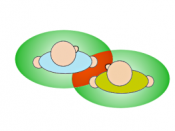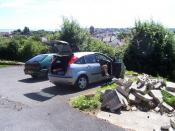Territoriality in Public Spaces
Would you linger in an area, such as a telephone box or car parking space, if somebody was waiting to use it? Many people would like to think that they would leave the area quickly, but research shows that in some cases territorial behaviour can occur in a public place.
Territorial behaviour often occurs in areas of private ownership, such as a person's home. Ruback and Barash (1977) describe the cost-benefit analysis of territoriality. This means that if the perceived cost of resisting an intruder is less than the value of the territory then they will defend their property; however, if the perceived cost of defending the area is greater than the value of the territory then the occupant will not resist the intrusion.
Territorial behaviour that occurs in areas of private ownership is accepted and almost expected. The area of interest to psychologists, however, is when this behaviour does occur in a public space.
A lot of research has been done into this area. Altman (1975) was one of the first psychologists to look at the subject. He defined three types of territory; the first one is primary territory. This means that a person has a sense of ownership rather than simply frequency of use, such as a person's car parking space. The second one is secondary territory; this means the maintenance of moderate control, established through regular use, e.g. where you sit in class, or stand at the local pub. The final one is public territory; this means that area is only yours for as long as you are using it, e.g. a telephone box or public car parking space (cited in Cara Flanagan; A Level Psychology study guide).
Settled territories are related to dominance hierarchies, both of which lead to reduced aggression. Sundstrom...



Gd
That was really interesting nd v. true. Each argument was well backed up. One thing that would have boosted the essay loads is if you had said why some people are more territorial in some places than others and why
0 out of 1 people found this comment useful.